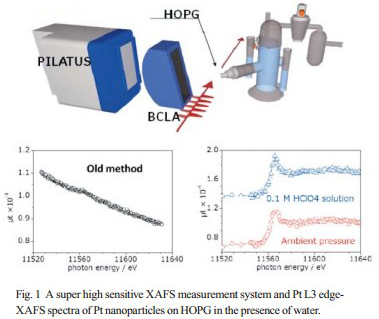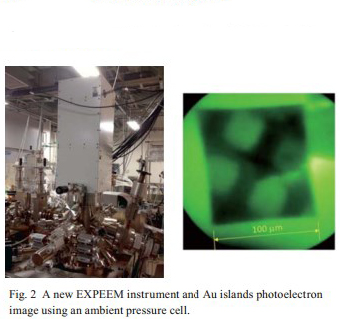Catalyst Surface Research Division
Observe, Create and Manipulate Surfaces
![]() Ken-ichi SHIMIZU
Ken-ichi SHIMIZU ![]() Sadaaki YAMAMOTO
Sadaaki YAMAMOTO
Our missions are (1) observing the catalytically active solid surfaces in an atomic level to reveal the reaction mechanisms, (2) making the catalytically interesting surface and (3) manipulating the surface reactions.
Ni2P, a new class of hydrodesulfurization catalyst has been investigated to reveal the reaction mechanism by the simultaneous measurements of FT-IR and Quick XAFS under working conditions, by the atomic resolution STM observation on the single crystal Ni2P and by the DFT calculations.
Fuel cell is another target. We have developed super high sensitivity fluorescence XAFS methods, which attain double-digit improvement in sensitivity under the presence of the solution (Fig. 1).
We are challenging to develop new surface analysis methods. We are now developing 3D PEEM, ambient/solution PEEM, Chemical mapping PEEM, and BioPEEM under the collaboration with companies (Fig. 2). We are also focusing on the introduction of new quantum beam techniques to catalysis fields such as positron, muon and free electron laser, which will be powerful tools to reveal the topmost surface structures, the structures and properties of defects, and fs time resolution structure change of the surface.
 |
 |
